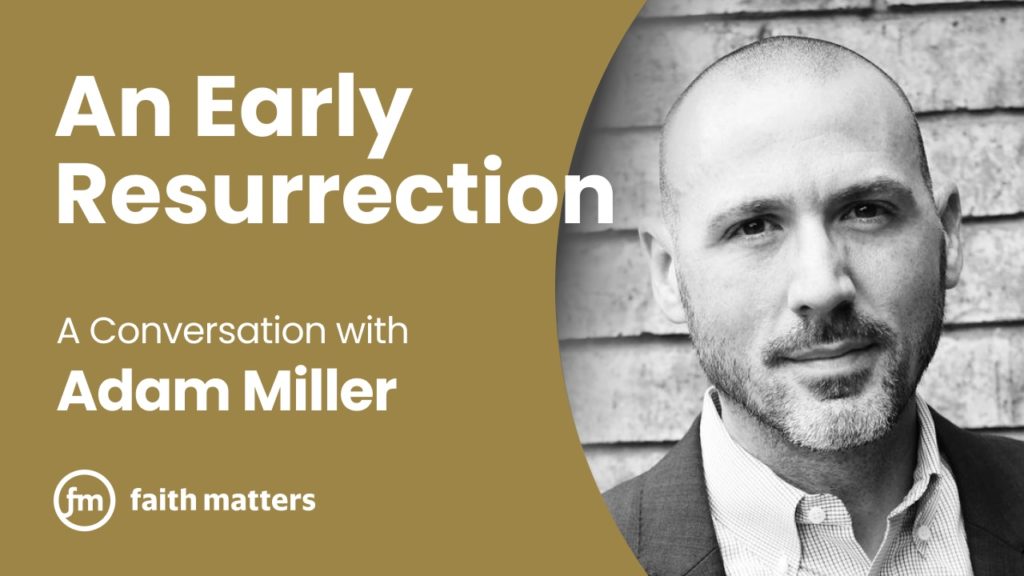The question of whether the Book of Mormon is a genuine record of ancient peoples, a remarkable piece of inspired fiction, or a pious fraud upon a gullible people can never be definitively resolved. A separate question, and a live question for many Saints, is whether one can be a faithful member without affirming the Book of Mormon as a historically true text.
For many, there must at least be a good argument for the plausibility of Book of Mormon historicity. And so apologists have for decades brought forward arguments that the book is not only plausibly historical, but convincingly so. Skeptics and critics have similarly made their case to the contrary. Can we declare a victor? Let’s take a quick look.
Case For Historicity
Two categories of evidence have been invoked to argue for the historical reality of Nephites and gold plates. The first category is external evidence. In the nineteenth century, the Book of Mormon struck many Saints as answering the question raised by John Lloyd Stevens when he explored the fabulous ruins of central America and described elaborate “architecture, sculpture, and . . . all the arts which . . . had flourished in this overgrown forest.” He then asked:
“Who were the people that built this city? America, say historians, was peopled by savages. But savages never reared these structures, savages never carved these stones. . . . Books, the record of knowledge, are silent on this theme.”1
Unfortunately, no New-World archeological evidence has ever been found to definitively link any ruins, Mesoamerican or otherwise, to the Book of Mormon.
The closest thing we have to concrete archeological evidence is probably the altar complex found in the Old World in what is now Yemen in the Arabian peninsula. There, in the early 1990s, a German archaeology team discovered a carved altar a few dozen miles east of modern San‘a inscribed with a reference to the tribe of N*hm, and another with a like inscription has since been found from that area. Located in the very region where Nephi’s record locates Nahom, these altars may thus be said to constitute the first actual archaeological evidence in support of the historicity of the Book of Mormon. This was not something Joseph Smith could have known and stands as a very real challenge to skeptics.
Ancient parallels like various instances of writing on metal plates and recognition of an ancient “demotic Egyptian” that sounds vaguely like “reformed Egyptian,” have also been seen as endowing the gold plates with plausibility.
By the mid-twentieth century, defenders of the Book of Mormon had shifted their focus to internal evidences of the scripture’s antiquity. Hugh Nibley did extensive work in this regard, asserting ancient parallels with many components of the Book of Mormon text, including middle eastern execution practices and coronation rituals. He also points to rhythms and forms evocative of Arabic poetry of the desert.
Numerous scholars have pointed to chiasms—an ancient literary form consisting of inverted parallelisms—of impressive complexity and beauty throughout the Book of Mormon. Others have used word prints to corroborate multiple authorship as the Book of Mormon claims and yet others have published work assessing layer upon layer of literary complexity and design, and multiple instances of apparent Hebraisms scattered throughout the text. The recent decades have also uncovered ancient attestations of Book of Mormon place and proper names.
Taken together, these arguments for Book of Mormon historicity are difficult to dismiss.
Case Against Historicity
As early as 1830, critics saw in the Book of Mormon evidence of 19th century influence, including topics of contemporary religious debate (such as infant baptism), a strikingly anachronistic Christ-centeredness, and other anachronistic references to horses, steel, scimitars and other Book of Mormon cultural elements. Nineteenth-century cultural motifs common to the modern era, such as fainting spells at revivals and “slippery treasures,” are also scattered throughout the Book of Mormon. In addition, thematic and linguistic parallels have been discovered with 19th century texts, such as Ethan Smith’s View of the Hebrews and another history called The Late War.
Many observers don’t think anachronisms are even necessary to establish disproof of antiquity, since in the words of one skeptic, “angels don’t give gold plates to farmboys.” In other words, the whole idea of supernatural manifestations, resurrected beings, and holy relics that convey interpretive power, all seem self-evidently beyond the pale of reasonable belief.
The Difficulty of a Middle Ground
Years after his disaffection from the LDS Church, David Whitmer related to a Chicago Times reporter that “three times has he been at the hill Cumorah and seen the casket that contained the tablets, and the seer-stone. Eventually the casket had been washed down to the foot of the hill, but it was to be seen when he last visited the historic place.”2 Though the gold plates were never accessible to public gaze, claims about its enshrouding stone box would continue to circulate as a stubborn reminder—and extenuation—of the insistence on the Book of Mormon’s rootedness in material reality.
It would seem that the brute physicality of the plates—their brazen resistance to allegorizing or spiritualizing—has to be the point. It would have been so much more prudent, so much safer, for Smith to claim the Book of Mormon derived from a personal revelation, or spirit-led automatic writing, or—as with Doctrine & Covenants 7—a transcription of a visionary artefact. Why articulate instead the most testable, the most implausible, the most seemingly disprovable of claims: Actual plates of gold written by ancient Israelites and hidden in an upstate New York hillside?
The artefactual concreteness of this origin story seems a deliberate, essential parallel to the resurrection of Christ himself. As a “scandal of Christianity” (in Emil Brunner’s words), the Resurrection was a barrier, a threshold, that one could not pass without sacrificing the tenacious hold of one’s inherited cultural and rational suppositions. Both accounts—early Christian and Restorationist—defied casual belief, or painless discipleship. To this day, engaging the looming presence in the Restoration saga of gold plates inscribed in “reformed Egyptian” is a virtual initiation ritual whose purpose is to foreground an intensely personal and persuasive experiential knowledge as the price of admission.
Concluding Thoughts
If religious faith presupposes a willingness to entertain inconclusive–but not unreasonable—grounds for belief, then the Book of Mormon is an appropriate test subject. Almost a thousand years ago, Thomas Aquinas wrote that “spiritual light, coming from on high, gives the intellect the perfection to know … even those things which our natural reason cannot reach.”3 In other words, if our rational wrestle with the pros and cons of belief leaves us at an impasse, then we may rightly seek additional sources of knowledge. We know many things we cannot prove—certitudes that pertain to the realm of morality, of love, and of the Good. We should trust that in matters of highest stakes, we may rely upon faculties of heart and soul–intuition, inspiration, or revelation–to complement our own powers of reason.
I find the Book of Mormon—in its literary totality—a work of such depth and internal consistency as to command my respect. I find its poetic patterns and textual parallels with ancient culture and history sufficient to defy simplistic explanations of plagiarism or raw invention. I find the earnestness of its authorial pleadings impossible to dismiss as fraudulent manipulation.
If Christ’s resurrection was a pious fiction, then all of Christianity is just holy fraud—and our delusions will be productive of nothing more than brief respite from an eternal silence. Similarly, if the countless examples of God’s ministrations to Lehi, Nephi, Jacob, and Moroni are fictive inventions, then for me the moral of the story evaporates. Sometimes, the historicity of the story is the point. To my mind, only the seamless thread that connects those seekers of old and my own stubborn stumbling after particles of light, can instill a faith that bears real fruit. The text helps make the infinitely caring God of Enoch present to me—my litmus test for divinely inspired utterance.
The anachronisms and period parallels are real—but we might reasonably understand them as white noise in the fraught channel of transmission. Revelation—and even translation, in my understanding—is eternal truth channeled through a finite mind, and both revelation and translation generally bear the detritus of that finitude. It was as a seer and prophet, not just another child of his age, that Joseph lamented “the little narrow prison, almost as it were total darkness of paper pen and ink and a crooked broken scattered and imperfect language.” And it was as this same prophet that Joseph himself hopefully anticipated a day yet future when God would “hold up the dark curtain” so that we might “read the round of Eternity to the fullness and satisfaction of our immortal souls.”4

Belief in the historicity of the Book of Mormon is not a temple recommend requirement; members have a variety of ways of dealing with this modern stumbling block, a conspicuous impediment in the stream of casual Mormonism. The audacity of claims about Nephite angels, magical interpreters, and gold plates, calls upon us to make our own peace in our own way with this remarkable scripture. I am happy to share the pew with Saints whose testimonies, like my own, are the carefully wrought—and evolving—response to a Restoration ablaze with both truth and mystery.
Notes
- John Lloyd Stephens, Incidents of Travel in Central America, Chiapas, and Yucatan (Washington: Smithsonian Institute Press, 1993), 38-40.
- Chicago Times, 7 August 1875, in Lyndon W. Cook, ed., David Whitmer Interviews: A Restoration Witness (Orem, UT: Grandin, 1991), 7.
- Thomas Aquinas, De Veritates XIII art. 3.
- Joseph Smith, Letter, Kirtland Township, OH, to William W. Phelps, [Independence, Jackson Co., MO], 27 Nov. 1832.



